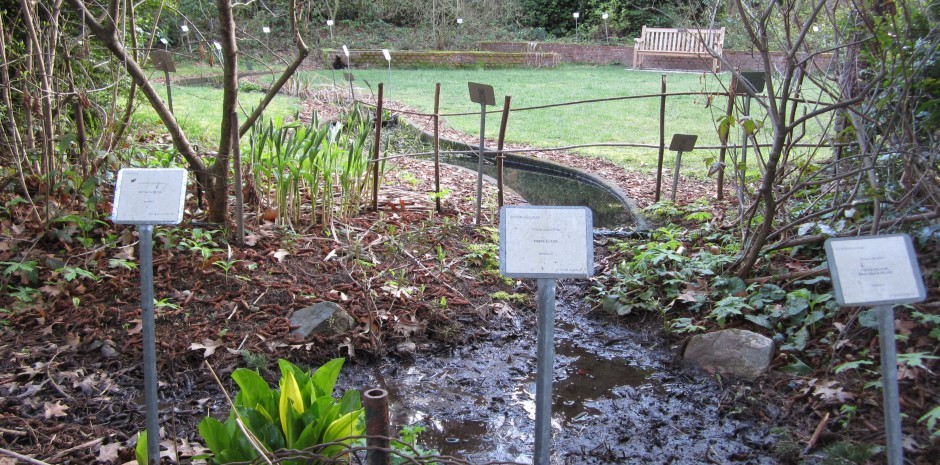The fall colors have been the best I’ve seen in over thirty years living in Seattle.
The sugar maple (Acer saccharum), whose shadow is the bane of the nearby olive trees’ (Olea europaea) existence, has nearly redeemed itself this year.

The dependably colorful staghorn sumac (Rhus typhina) is dependable still. The yellow shrub behind it is western sweetshrub (Calycanthus occidentalis).

Morning light on the oak (Quercus sp.) west of Cascara Circle. Morning light is one of the great things in life.
The California wild grapes (Vitis californica) finally ripened up:

…a few days later, this was all that was left. Some of the clusters were 12 feet off the ground and every grape was gone. Weird. Someone suggested an opossum (Didelphis virginiana). Maybe. If a human had gathered them, they would have picked whole clusters, not individual grapes, and needed an orchard ladder. I’ve seen starlings (Sturnus vulgaris) remove most of the fruit off a fig tree in a day so maybe starlings. Hmm. Another garden mystery.

I picked a big bunch of grapes before they disappeared. No, that’s not the early stage of wine making, just fermentation to help prepare the seeds for faster germination.

The mature fruit of the Chilean myrtle (Luma apiculata) are not worth the trouble, in my opinion. They can’t compare to the Chilean guava (Ugni molinae) and aren’t much better than the common myrtle fruit (Myrtus communis).

The Chilean guavas are so good that the rabbits were gnawing off the branches to get the fruit. Grrr…

Extreme measures saved the day. It will be a very strange herb garden if everything the rabbits like to eat must be protected with hardware cloth.
The coyote (Canis latrans) appears to have moved on for now. Either that or s/he has lost interest in the lure. Here are the last photos (for now).

Infrared activated at 10:24 am. Seems like there would have been enough light for a color shot by then.

This one, taken within ten seconds, is in color. Go figure. This trail camera is rugged but it’s not exactly known for image quality. It’s possible the light changed slightly or the light meter just isn’t very good. Moultrie actually makes excellent cameras, many more expensive models with extra features, but, assuming this one might be stolen or destroyed, I aimed for an inexpensive model. It’s fine for identification, my main concern.

And good enough to show what raccoons (Procyon lotor) are up to when we’re not around. At night they stand on their hind legs and discuss strategy.
That’s what passes for the news around here.
at ease around us
furry and adaptable
some call them critters
See you in the garden.






